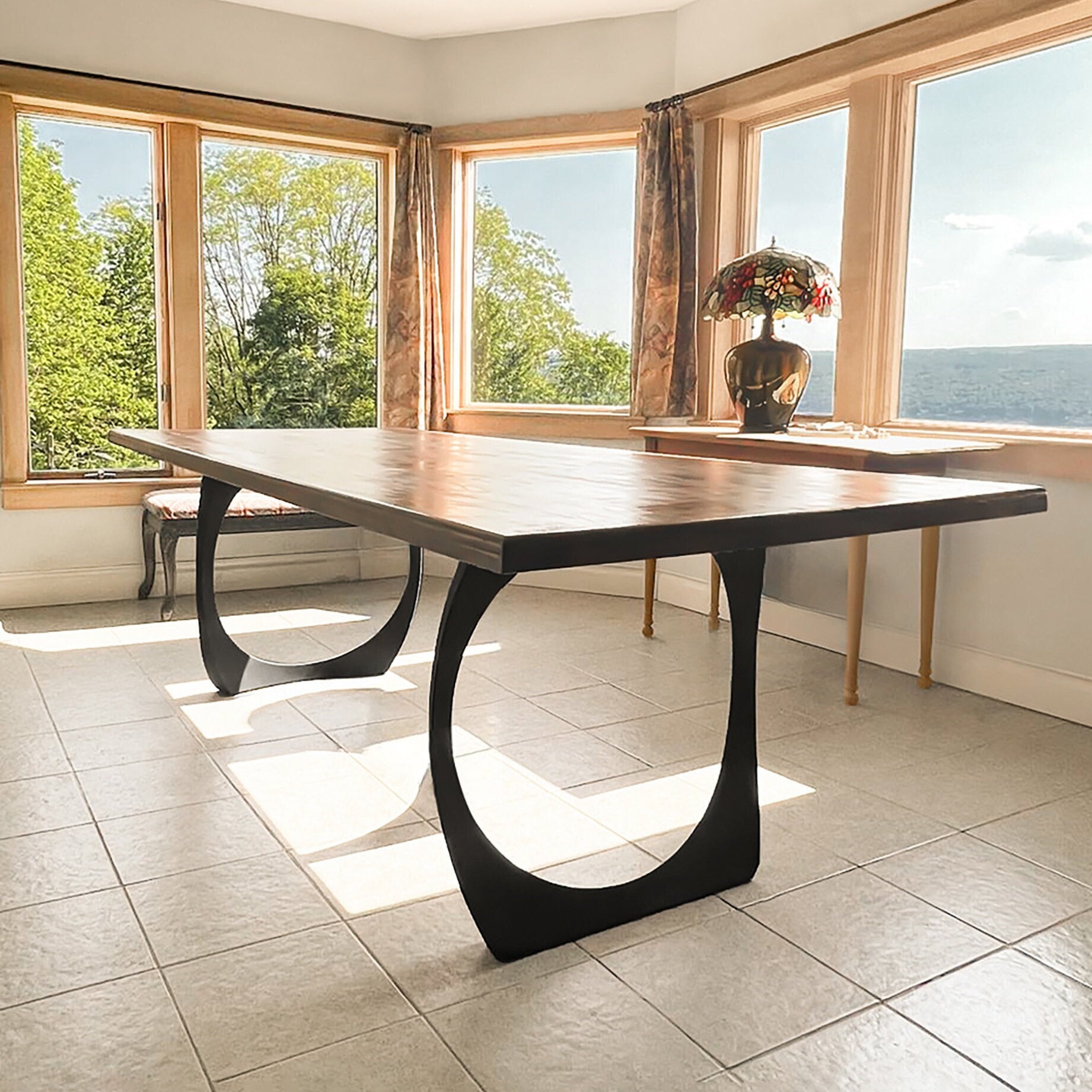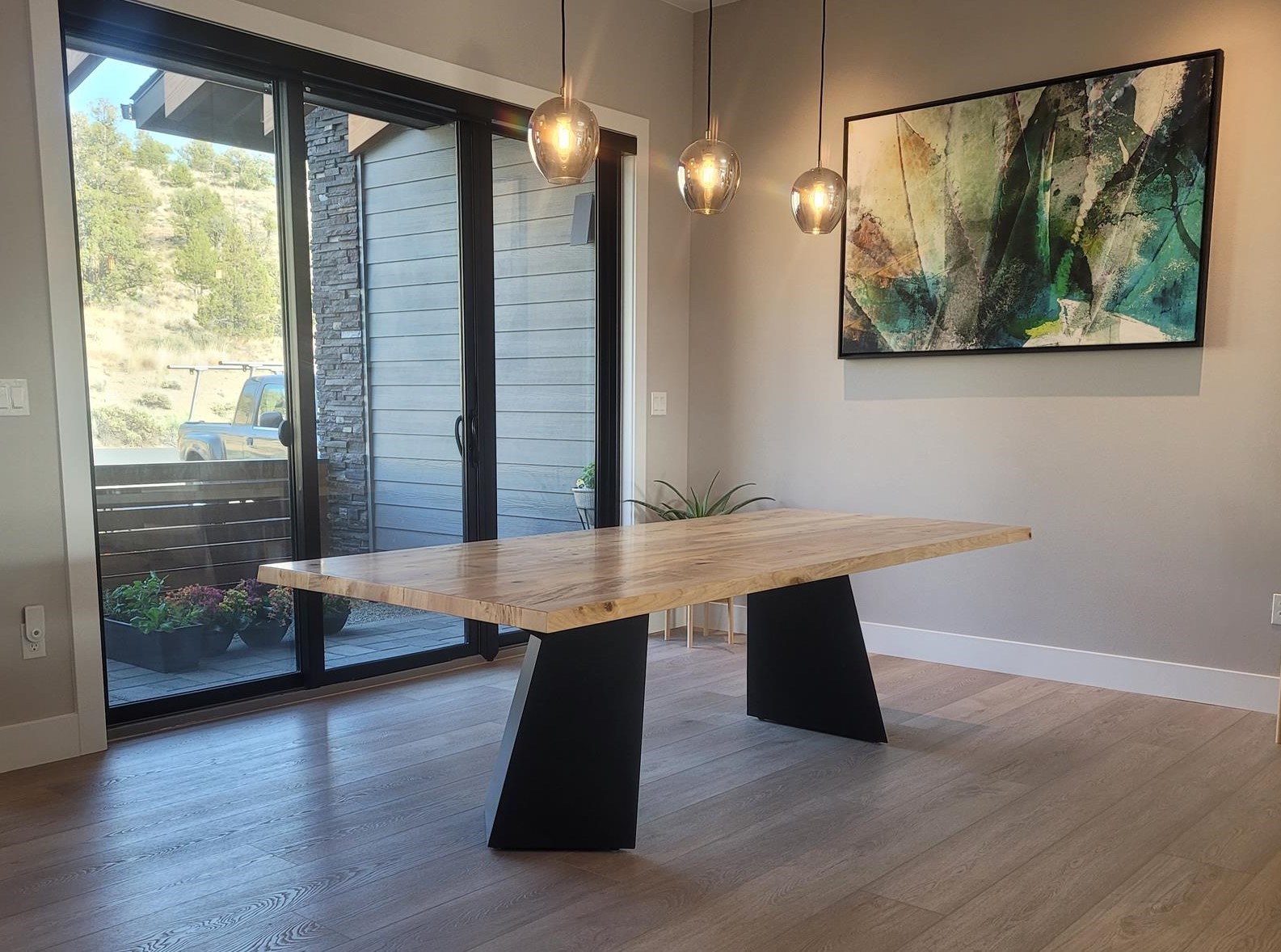Dining Room Table Legs That Integrate Functionality and Modern Design
Dining Room Table Legs That Integrate Functionality and Modern Design
Blog Article
Picking the Perfect Table: What Styles Work Best for Your Home?
Choosing the optimal table for your home can be a nuanced process that stabilizes aesthetic appeals and functionality. Whether your room leans towards traditional style, contemporary minimalism, rustic appeal, or industrial stylish, the selection of styles readily available can accommodate varied tastes. Each layout provides one-of-a-kind benefits and obstacles that can either improve or interrupt your dining location's harmony. Recognizing how various products, shapes, and dimensions interact with your existing decoration is critical. To navigate these selections efficiently and locate a table that truly matches your home, take into consideration the complying with facets in detail.
Evaluating Your Space
Examining the measurements and design of your eating location is an important very first step in picking the best eating table. Begin by measuring the length and width of the space, representing entrances, home windows, and various other architectural features that could influence table placement. This guarantees that your table not only fits however likewise permits comfortable movement around it.
Consider the number of people you usually amuse. A table must fit your house's daily demands while offering sufficient adaptability for periodic visitors. As a regulation of thumb, allot at the very least 24 inches of table size per individual to make sure a comfy dining experience.
It's also important to maintain proper clearance around the table. Preferably, there ought to go to least 36 inches in between the table side and walls or various other furnishings, enabling easy gain access to and motion. For spaces where chairs with arms or additional storage space systems like buffets are involved, increasing this clearance to 48 inches is recommended.
Illumination and atmosphere play considerable duties. Ensure that your dining table straightens with existing lighting fixtures or prepare for sufficient illumination options. This comprehensive spatial assessment guarantees that your table not only fits physically but likewise integrates with your space's total performance and aesthetic.
Popular Table Styles

Typical eating tables usually feature ornate details, curved legs, and abundant wood surfaces, evoking a feeling of ageless sophistication. They are best for homes with timeless style or those looking to include a touch of class to their dining area.
Modern dining tables focus on simplicity and clean lines, often integrating products like glass and metal. These tables are ideal for modern spaces, providing a streamlined and clean appearance that complements minimalist layout approaches.
Rustic table, on the other hand, emphasize all-natural products and a handcrafted appearance - dining room table legs. They commonly include recovered wood and a troubled finish, creating a cozy and inviting environment. These tables function well in farmhouse-style homes or those seeking a relaxing, natural feeling
Industrial dining tables combine raw materials such as steel and wood, frequently showcasing a practical aesthetic. This style is fit for lofts or urban spaces, including a touch of browse this site rugged appeal and resilience to the dining experience.
Each style supplies unique benefits, making it important to select one that aligns with your home's general layout and your individual preferences.
Product Options
When picking a table, the selection of material plays an important duty in identifying both the table's looks and capability. Timber, steel, glass, and composite materials each offer special advantages and challenges, making it essential to align the material with your home's design and way of life requirements.
Timber is a timeless and functional option, readily available in selections such as oak, walnut, and mahogany. Recognized for its durability and warmth, timber enhances both typical and modern insides. It needs routine maintenance to prevent scrapes and bending.
Metal tables, typically crafted from stainless steel, aluminum, or click here for info functioned iron, are applauded for their contemporary appeal and toughness. They are particularly suited for commercial or minimalist setups yet can be susceptible to damages and may really feel cold to the touch.
Glass table bring an air of style and visibility, perfect for smaller spaces as they develop an illusion of even more room. While very easy to tidy, glass can be susceptible to smudges and needs cautious managing to prevent chips and cracks.
Composite materials, such as MDF and plywood, offer cost-efficient and personalized options, though they might lack the longevity of all-natural products. Picking the ideal material ensures your table is both a practical possession and an aesthetic pleasure.
Forming and Dimension Considerations
After determining the ideal product for your eating table, the next factor to consider is choosing the best shape and size to fit your space. On the other hand, round tables foster a feeling of intimacy and are exceptional for smaller dining areas, urging discussion by getting rid of edges and read the full info here making everyone feel similarly included.
As a policy of thumb, allocate at least 24 inches of table width per person to make sure comfortable eating. Additionally, consider the table's clearance space: there need to be at least 36 inches between the table edge and the walls or various other furniture. Expanding tables use versatility if you often host bigger gatherings, supplying additional seats when required without occupying added room daily.
Matching Your Decor
Choosing a dining table that integrates with your existing decoration is pivotal in developing a natural and welcoming room. A smooth, minimalist table with clean lines is optimal for a modern-day home, while a vintage, elaborate table fits a much more typical setting.
Shade and product are similarly substantial. If your decor features cozy tones and natural products, consider a wooden table to boost the organic feel. On the other hand, a glass or steel table may be better in a room controlled by amazing shades and commercial elements. Take notice of the coating, as it needs to mirror other furnishings and components to maintain harmony.
Structure plays a vital duty too. A rough-hewn, reclaimed wood table can include personality to a rustic area, while a sleek marble surface area can boost a luxurious dining area. Finally, consider the scale and proportion of the table in regard to the room size and existing furniture. A well-matched table not only enhances visual allure yet additionally enhances the general dining experience.

Conclusion
Choosing the ideal table requires mindful consideration of space, style, products, form, and dimension (dining room table legs). Typical tables complement classic interiors with abundant timber coatings, while modern-day tables suit contemporary settings with glass and steel. Rustic designs introduce warmth by means of all-natural products, and commercial designs boost city settings with raw elements. Balancing the table with existing decoration makes certain both capability and aesthetic appeal, contributing to a cohesive and aesthetically pleasing dining area.
Report this page